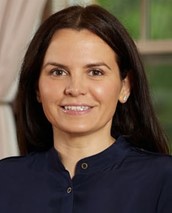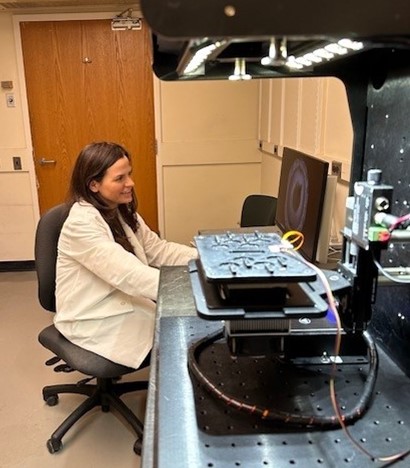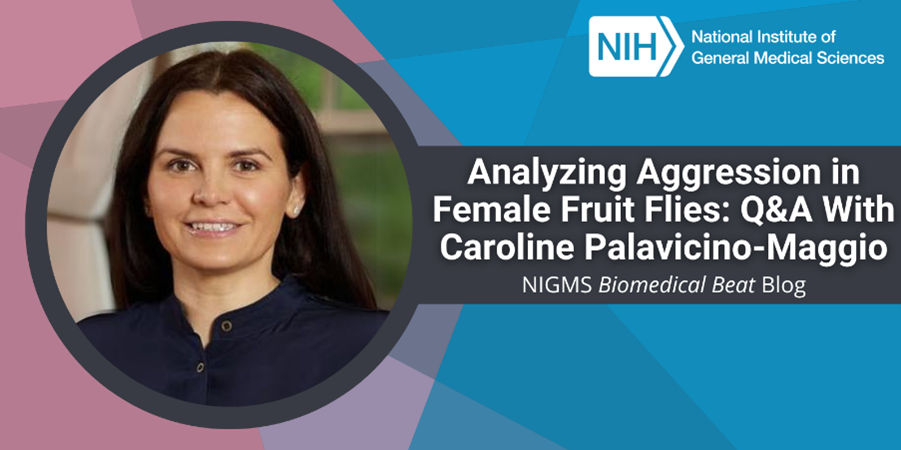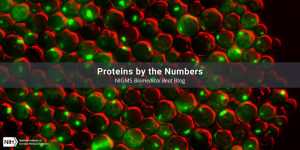
“Turning personal grief into a relentless drive for answers and action has been a big part of my life,” says Caroline Palavicino-Maggio, Ph.D., the director of the Neurobiological Mechanisms of Aggression Laboratory at McLean Hospital in Belmont, Massachusetts. Her sister’s death played a large role in her decision to study the biological mechanisms of behavior and do advocacy work in mental wellness. We spoke with Dr. Palavicino-Maggio about what her path was to becoming a researcher, what she’s learning about the cellular basis of aggression, and why she believes a career in science is exciting.
Q: How did you first become interested in science?
A: Looking back, I was a pretty curious child—I was always asking my family members and teachers questions. I was especially curious about the behavior of some of the animals I saw around me, like the rodents in the New York City subway system or the cockroaches in my childhood apartment. I wondered how they knew when a drawer or a cupboard opened and when to run away. I asked all these questions, but I never knew that was a form of scientific curiosity.
My curiosity evolved as I got older. When I was 13, my older sister, Angie, died by suicide, and I was launched into the world of mental health and depression. Angie was an active member of our community—she taught older Spanish-speaking community members how to read and write in English—and outwardly seemed like a happy person. I started to question how thoughts are formed and what causes depression in the hopes of understanding what Angie was experiencing and why. These questions ultimately led me to study biopsychology at Rider University in Lawrence Township, New Jersey.
Q: What were the next steps on your scientific career path?
A: After finishing my undergraduate degree, I worked as a research technician, first studying malaria vaccine development, then analyzing brain tissue samples from suicide victims. The second position, which was at Columbia University in New York City, involved taking microscopy images of the tissue samples and counting the number of cells of each specific type to understand the changes that happen in the brain during depression.
I had no idea that going to graduate school was an option for me, nor did I believe I could afford it even if I had the opportunity. That is, until I sat next to a dean at Rutgers Medical School on my way to a science meeting. I learned that some Ph.D. programs are not only free but also provide a stipend. This was very important to me because it meant that I could continue my studies, obtain some independence, and design some of my own experiments researching the questions I wanted to study. I attended Rutgers University in Newark, New Jersey, to study neuropharmacology and neurophysiology—fields that focus on medicines for neurological disorders and on how the nervous system functions, respectively. I investigated why antipsychotic medicines cause weight gain, a side effect that often leads to patients not wanting to continue treatment, and learned that these medicines change sugar absorption and metabolism.
After completing my Ph.D., I started a postdoctoral position in the lab of Edward Kravitz, Ph.D., at Harvard Medical School in Boston, Massachusetts, to study neurobiology using the research organism Drosophila melanogaster, the common fruit fly. Fruit flies are ideal research organisms because they have short life spans and a relatively simple brain, and many advanced genetic and molecular tools have been developed to study them.
I studied the nerve cells that drive aggressive behavior in fruit flies. We knew that these behaviors are sexually dimorphic, meaning they’re different between the two sexes. When female fruit flies fight, they use headbutts and a “wings up and charge” maneuver, but males use a lunging motion. We knew that specific nerve cells in male fruit flies cause aggression when activated, but we didn’t know if the same nerve cells drove aggression in females. Using high-speed video cameras, I analyzed the behavior of genetically altered female fruit flies that showed heightened aggression patterns. Then, by studying their brains, I determined the exact type of nerve cells driving the behavior. I learned that the nerve cells seem to only exist in female fruit flies, which told us that male and female aggression in fruit flies is wired differently.
Q: What does your lab study?

A: My lab is continuing what I started in my postdoctoral work, including generating a complete map of the nerve cells that control female aggression in fruit flies. From a basic research standpoint, we’re answering important questions about the biological basis of behavior, but there are clinical implications to our work as well. Some neurodegenerative disorders, including Alzheimer’s disease, are associated with behavior disturbances and aggression. Using research organisms as models for these diseases, we hope to uncover changes in the nerve cell pathways regulating aggression in disease that may become targets for treatments one day.
Q: What do you consider to be your biggest accomplishment so far in your career?
A: My biggest accomplishment is that I’m a researcher with my own lab. I never thought I’d be here. It’s hard to see yourself in a role you’ve never been exposed to, and I didn’t know any scientists when I was a kid. I thought undergrad would be the end of my education, but it was only the beginning.
Being awarded a grant through the Maximizing Opportunities for Scientific and Academic Independent Careers (MOSAIC) program was also an important achievement in my career. It opened a lot of doors for me as I began to look for a place to start my lab.
Q: What are you involved in outside the laboratory?

A: Since my sister’s death, it’s been important for me to work in outreach and advocacy to help lift the stigma around mental health. What I learned about the underlying causes of mental illness helped me—and in turn, my family—come to terms with Angie’s death, so I knew it was important for others in our community and beyond to learn the same. The more openly we talk about mental health, the more normal it becomes.
I recently traveled to Uganda to meet with religious leaders and community members in small villages to speak about mental health. I talked to them about my story, my research, and the importance of discussing mental health and helping those in need.
Q: In your opinion, what makes a career in science exciting?
A: The discoveries, and how science is ever-changing, make it exciting. Sometimes, new data challenges what you thought you knew about a biological system, and you learn that something has an entirely different explanation. I love that about science—it keeps you on your toes. I’m guaranteed to have questions to answer for the rest of my life!
Dr. Palavicino-Maggio’s research is supported by the NIGMS MOSAIC program through grant R00GM141449.







